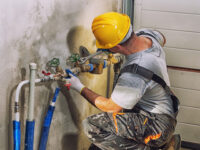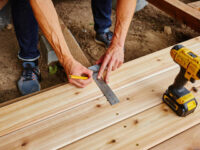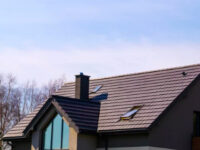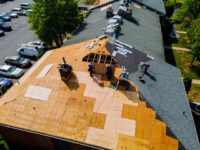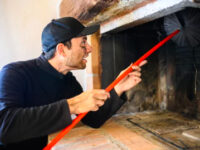Angled Masonry Supports
Brick, stone, and masonry are often used as non-load-bearing exterior veneers. Pro Angle Masonry Charleston uses the support of a shelf angle, which transfers the weight to major elements of the building structure.
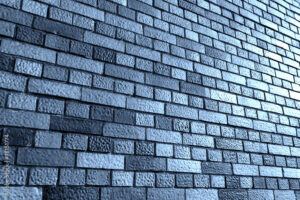
This article explores shelf angle systems and explains their role in masonry veneer building construction. It reviews movement control, moisture management, thermal performance, and strategies for optimizing shelf angle location, constructability with interfacing components, and accommodating structural tolerances.
In brick masonry construction, angled walls are commonly used to achieve vertical detailing of structural components. For example, a lintel or a tie beam may need to be angled away from the wall to accommodate a window opening. Angled walls are often used to form corner details or support chimneys or water heaters. The detailing required for a masonry structure will depend on the design’s size, location, and height, the amount of movement expected within the cladding system, the number and size of windows, the type of masonry anchorage, and the building code requirements.
During the design and construction process, the primary concern of most engineers is to balance the tendencies of both concrete and masonry to expand and contract differently from one another. This movement can lead to stress cracking, deflection, and lateral displacement of the wall. Movement control is provided through horizontal and vertical expansion joints, shelf angles, and adjustable veneer anchors to mitigate these tendencies.
A steel angle in a brick wall creates a horizontal movement joint that expands the masonry veneer while leaving airspace between the masonry and the underlying building construction. As such, the masonry construction must be properly supported at the points of contact with the steel angle to ensure structural integrity and avoid weeping.
A common cause of weeping is the failure to include a horizontal movement joint in the masonry at the point of contact with the building frame. It can lead to the bricks contacting each other, forcing sealant out of the joint and into the building structure, causing damage and a potential route for water penetration.
Another common source of weeping is the failure to install a vertical movement joint at a building corner. It can result in the bricks coming together and forming long vertical cracks or displacement at corner joints. As part of a thorough quality assurance program, experienced consultants should review the installation of masonry movement joints to identify problems and provide recommendations for corrective actions.
Shelf angles, also known as masonry supports, are steel angle irons that support masonry above openings in walls such as windows or doors. When these angles are not properly designed and detailed, they can cause moisture and thermal problems in the building. They are often located in areas of the wall where movement is most likely to occur, and they interrupt the continuous insulation of the exterior wall system, creating a significant thermal bridge.
The design of these supports is typically complicated and requires consideration for movement control, moisture management, and thermal performance. Generally, shelf angles are installed within the wythe of brick and must be correctly sized to prevent masonry cracks. They are then fixed to concrete or masonry structural systems through anchor bolts. These bolts are common site drilled expansion bolts or coated setscrews. They can also be welded to the steel structure.
When lipped bricks are used on top of the shelf angle, they must be properly configured to ensure sufficient space under the lip for moisture expansion. Without this expansion, the bricks will push up against the shelf angle, causing damage and possibly cracking.
During a condition assessment of a four-story steel framed building constructed in 1996, several bricks under the shelf angle were spalling and barely clung to the wall. The lack of adequate drainage around the shelf angle allowed water to collect and trap the bricks. It caused the bricks to fail and collapse, potentially posing a safety hazard for pedestrians below.
A simple and effective solution is to use a bracket masonry support system such as the AnconOptima system to avoid this issue. The systems comprise laser-cut brackets and two-step angles with pre-marked fixing zones to help achieve accurate positioning. The standard system supports an uncategorized masonry load of up to 10kN, and the frames can be easily changed on-site to suit cavity width variations. When used with a thermal break, these systems can minimize heat loss through cold bridging and improve energy efficiency in the building.
An angled structural member that transfers axial loads from the wall or other element to a backup structure, such as a beam attached to a girder. Also called a shelf angle, it may be built on the back of masonry walls or abutting brick structures and in the form of lintels supporting doorways and windows. The most common type of shelf angle is a flanged steel angle between the lintel and the brick or masonry arch. Other shelf angles include precast concrete tips, dovetail masonry anchors, and masonry bearing plates.
The angle that abuts a masonry arch at the top of a column is often a segment of a triangular pediment. It may be carved or sculpted to provide ornamentation. The top of the angle is either sloped plainly to the wall or with a triangular pediment.
A bricklaying technique in which alternate courses are set on a slant instead of flat; usually, the direction of the tip is reversed in the next period to give a zigzag pattern. It is also used in paving floors, where the rule of incline changes in each row to produce a zigzag effect.
The slanting of units in a wall or other masonry structure relieves lateral thrusts and makes the system more aesthetically pleasing. A slanting may be accomplished with a single wall or a series of walls at regular intervals.
A hollow masonry unit is larger than a clay or concrete brick but smaller than a concrete block. A common material used to construct buildings.
Concrete masonry units (CMUs) may be manufactured using various methods, including cold-molded with water, hot-molded in a precast mold, or hot-molded in a bricklaying machine. These units are bonded with mortar and used to form walls, buildings, and other structures.
A masonry unit that has been immersed in either cold or boiling water for some time to precondition the mortar and harden the masonry. This process reduces the mortar required to bond a masonry unit and increases its strength.
Corbels provide structural support by bracing a horizontal protruding surface against the vertical side of the wall beneath it. Their triangular shape directs weight across the flat top and distributes pressure down the angle of the third side, tensing against the bottom of the vertical side. The result is a sturdy design that can withstand the force of gravity and different kinds of stress that may affect the protruding surface.
A builder can use various materials to make a corbel, though wood is the most common. Traditionally, they’re made by hand with tools like a hammer and chisel, but they can also be made with wood carving machinery that shapes the material to create the desired shape. Metal brackets are another option and can be made using techniques like wood.
When corbels support the corners of an arch or parapet, they’re often called spandrels. They can be carved as ornately as many Queen Anne-style corbels, but their primary function is to help form the curve of an arch and support it.
Corbels can be paired with other types of bracketing to add decorative detail to an architectural feature. For example, builders can pair a corbel with a pediment to create a balcony above a doorway. Alternatively, they can use them with a cornice to create a decorative crown molding.
In modern construction, corbels are often paired with other structures to support a roof or porch. They can also be used with a truss system to add depth to a ceiling and create a more decorative look. They can even be used as a decorative accent under a mantel.
During the Victorian era, builders began to use corbels as decorative brackets, often in ornate designs. The style became very popular and is still commonly used in contemporary architecture.
Corbels can be found in homes of all styles and ages, and they’re an easy way to enhance the aesthetic of any room. Whether they’re being used to support the eaves of a home or as a decorative accent on a furniture piece, these brackets are an easy and inexpensive way to add elegance and functionality.

